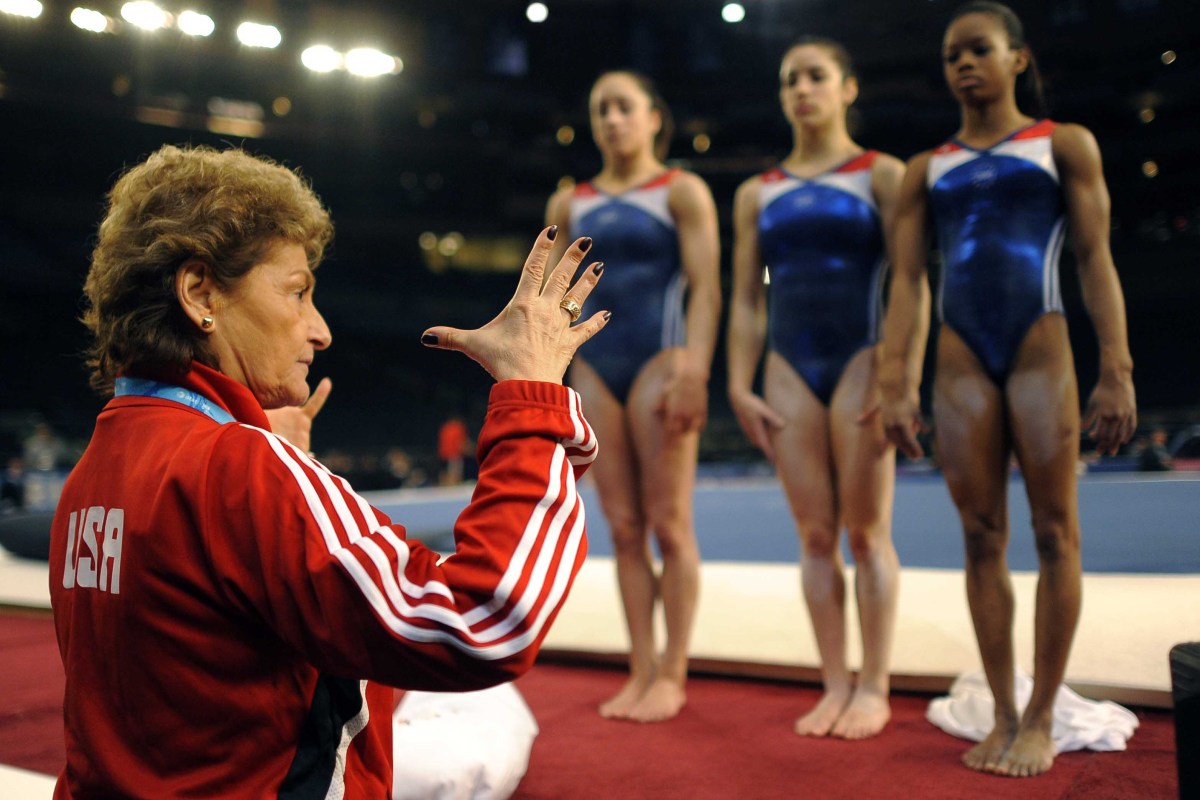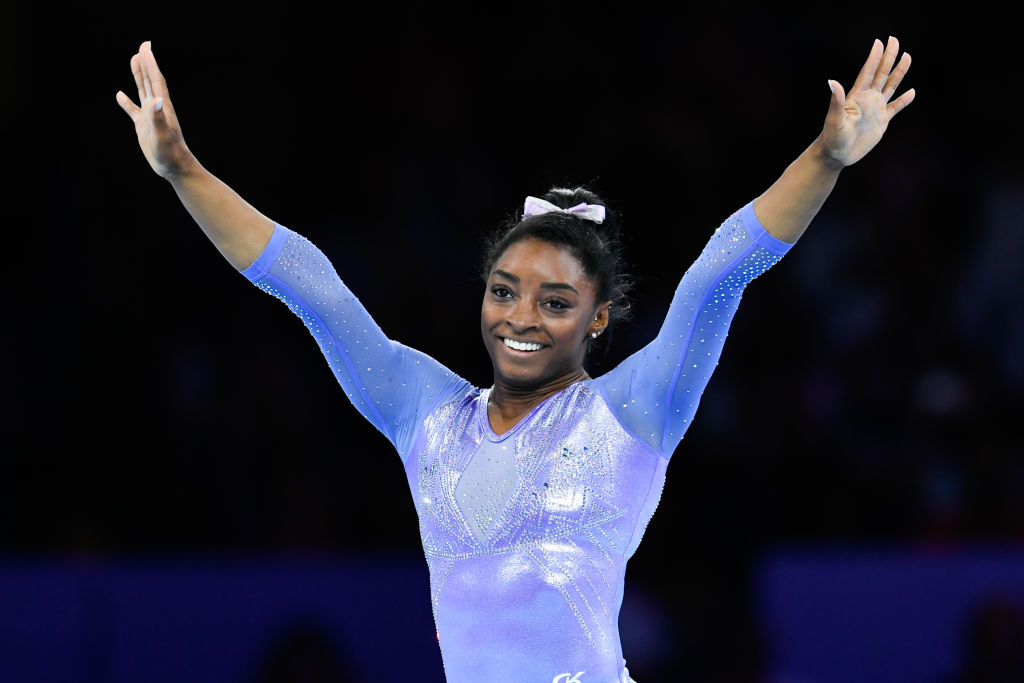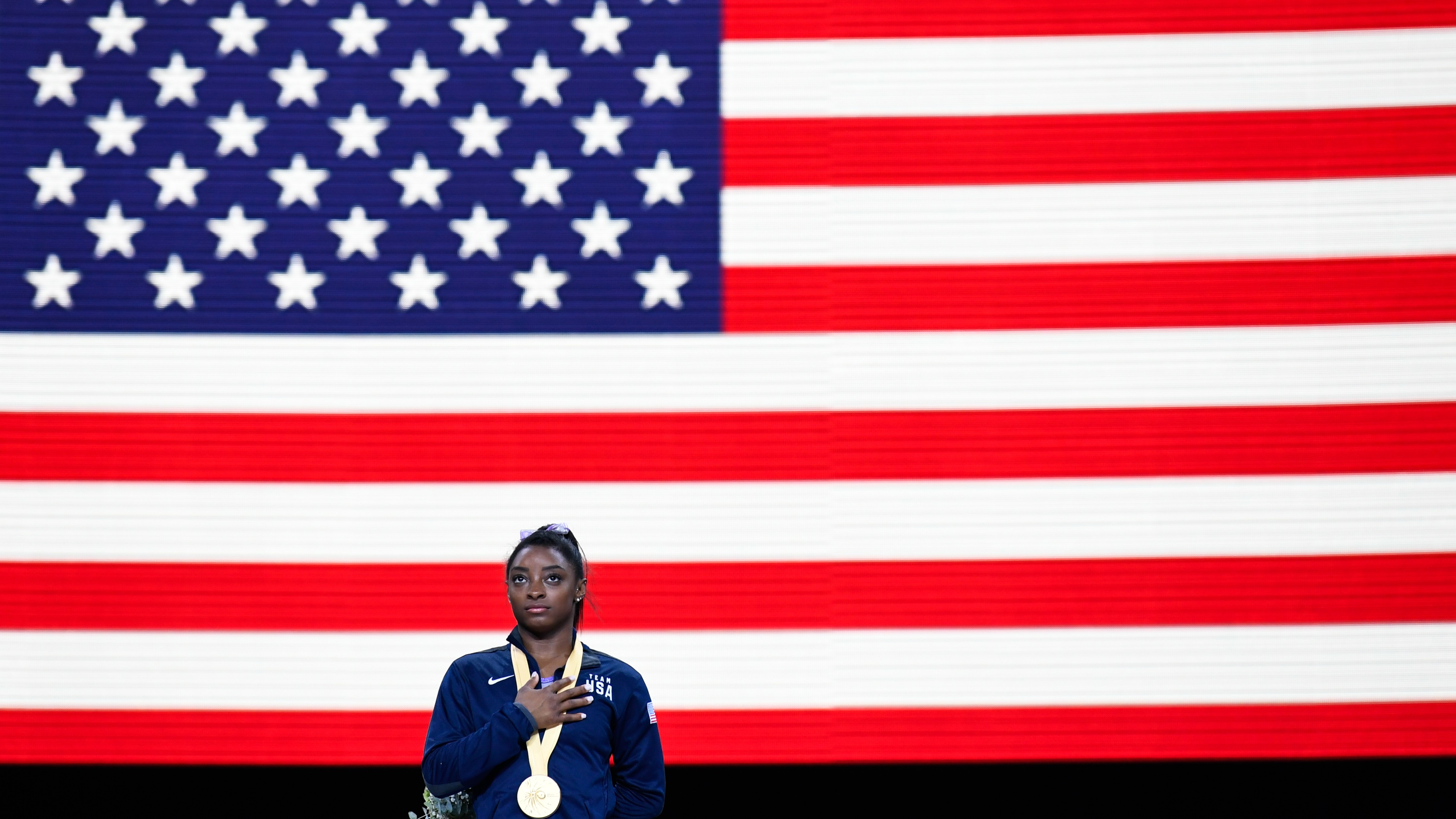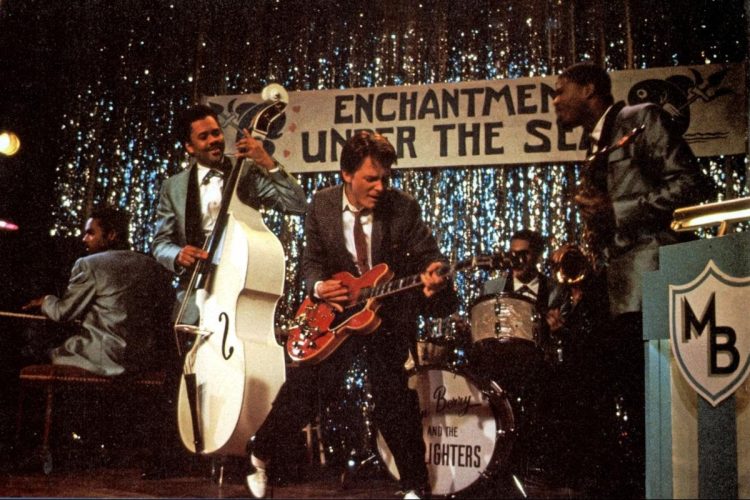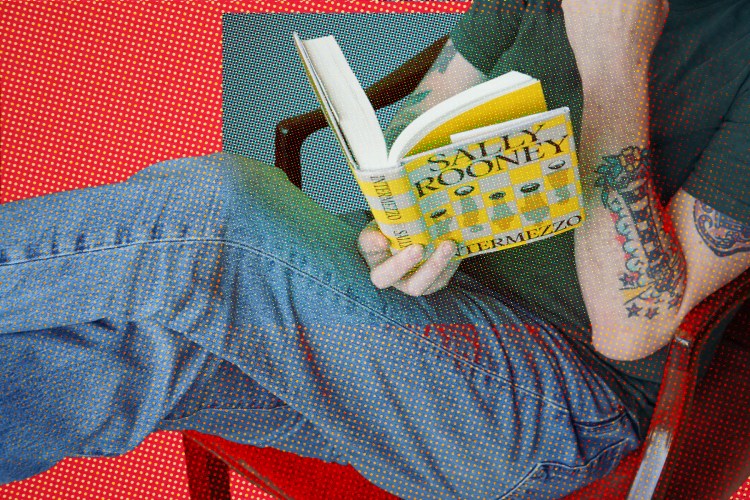Even if you’ve never watched a minute of gymnastics, you’re likely familiar with the horrific crimes of Larry Nassar, the former USA Gymnastics team doctor accused by more than 500 women and girls of sexually abusing them under the guise of medical treatment between 1992 and 2015.
In 2018, Nassar was sentenced to 175 years in a Michigan state prison after pleading guilty to seven counts of sexual assault of minors, along with an additional 40 to 125 years after pleading guilty to three counts of sexual assault. He will no doubt die in prison, and from an outsider’s perspective, it would be tempting to see that as justice served — a lone bad actor whose decades of depravity finally landed him in a place where he can never hurt another child again. But as Netflix’s recent documentary Athlete A and the new ESPN 30 for 30 podcast Heavy Medals comprehensively explain, Nassar was enabled by a cabal of people working within USA Gymnastics, many of whom knew about his abuse and attempted to cover it up instead of immediately reporting it to the police. In many ways, Nassar is the tip of the iceberg, part of a broader, systemic culture in elite gymnastics that includes physical and psychological abuse as well as starvation of young athletes.
Another high-profile gymnastics coach arrested for sex crimes
Nassar isn’t the only alleged pedophile who has worked with elite USA gymnasts. Just last week, Terry Gray, a former USA Gymnastics coach who worked in Las Vegas from 2009 to 2015, was arrested and charged with 14 counts of lewdness with a child under the age of 14. Gray — who also spent time as a coach in California and Ohio — was suspended by the organization in October 2019 after the allegations against him surfaced and an investigation was launched.
As John C. Manly, a lawyer who represents 200 gymnasts who are suing USA Gymnastics, told the New York Times, “This isn’t just any gymnastics coach, this is somebody who coached national team athletes, world champion athletes and Olympic athletes.”
According to CNN, Gray was still coaching at a gym in Southern California in 2018 despite being put on an “interim suspension” by USA Gymnastics for a previous criminal investigation. Connecticut Sen. Richard Blumenthal asked then-president of USA Gymnastics Kerry Perry about Gray during a congressional hearing, citing a report suggesting that Gray was unaware of his suspension. Perry claimed USA Gymnastics had sent an email and first-class mail to Gray’s gym notifying them of the investigation.
The blind eyes of Béla and Márta Károlyi
The image of Béla Károlyi yelling “You can do it!” to an injured Kerri Strug right before her final vault in the 1996 Olympics sealed victory for Team USA is an iconic one. At first glance, it’s an inspiring sequence, but if you stop and think about what was actually happening — Strug, who had severely sprained her ankle and torn two ligaments on the previous vault, sacrificing her body for the good of the team despite the fact that Dominique Moceanu’s 9.2 score before her was actually enough to mathematically ensure the Americans would win gold over the Russians —it’s emblematic of Károlyi and his wife Márta’s history of ignoring or disregarding the severity of injuries in the name of their win-at-all-costs attitude. “You can do it” is actually code for “you will do it.”
That culture doesn’t start and end with the Károlyis. (As former national team member Jennifer Sey notes on Heavy Medals, “there was screaming, hitting, sexual abuse” rampant in USA Gymnastics as early as the 1970s.) But the Karolyi Ranch, where Olympic hopefuls trained for decades, was a harsh and unrelenting proving ground where young athletes were frequently verbally abused about their weight and size, underfed and lied to or misled about the severity of their own injuries. (One gymnast who was 4’10 and 90 pounds at the time told ESPN that Béla once told her she was “big as a condominium complex.”)
Several gymnasts claim that the Károlyis would routinely search their bags for food, and in one episode of the podcast, Moceanu recalls being sent a teddy bear by her aunt that had candy hidden inside it. After the Károlyis found the candy, they told her father, who brought her into their office and hit her in the face in front of them. “I remember just holding my cheek, and I was trying to be tough, but I felt mortified and humiliated,” Moceanu says. “Márta had this look of satisfaction on her face like ‘good for you,’ and it was like she was happy that I was being punished, and it was like she enjoyed the moment.”
Mattie Larson, a national team member from 2007 to 2011, claims in one episode that after injuring her ankles and being taken to the hospital, she was not allowed to see her own X-rays and was told she had simply suffered a sprain. However, a later X-ray by her personal doctor revealed her right ankle was “clearly broken.” Jordyn Wieber, a member of the “Fierce Five” team that won gold at the 2012 Olympics, once sprained her ankle at the Károlyi Ranch while still a minor and was taken to the hospital without anyone bothering to notify her parents of her injury. She was diagnosed with a stress fracture in her right leg ahead of the Olympics, but that diagnosis was intentionally hidden from her by Nassar, who told her teammate Aly Raisman about it instead.
Gymnasts were not allowed to walk by themselves to meals, and food was frequently snatched out of their hands by Márta. Tasha Schwikert, a 2000 Olympic bronze medalist, told ESPN about the physical and emotional toll the strict diets took on her: “On at least four occasions in Sydney, I cried myself to sleep because I was hungry,” she says. “I had never cried myself to sleep about food in my entire life, but we’re at the Olympic Games, and I am like physically starving.”
“You can trust Márta to train the best gymnasts in the world,” UCLA coach Val Kondos Fields says on the podcast. “You can’t trust Márta to care about those gymnasts as human beings.”
She recalls bringing up concerns about Károlyi to then-USA Gymnastics president Steve Penny: “I asked him, I said, ‘Why do we let Márta get away with being so abusive to our young girls?’ And he looked at me like I was crazy and he just said, ‘Because she wins, Val.’”
Maggie Nichols left off of Olympic team because of Nassar allegations
One of the most infuriating details in Netflix’s Athlete A and ESPN’s podcast is the decision to leave Maggie Nichols, the 2015 national all-around silver medalist, off of the 2016 Olympic team after she reported being sexually abused by Nassar. Despite coming off of a knee injury, Nichols finished sixth overall at the Olympic trials, but was included in neither the five-athlete team selection nor as one of the three alternates. Nichols had reported her abuse in 2015, and the general belief is that she wasn’t chosen for the Olympics as retribution for speaking out about Nassar.
“Everybody knew she earned that spot,” Simone Biles says on the podcast. “Everybody knew it. Even Márta. Márta knew she belonged on that team. Márta cried when she announced the team. I don’t think Maggie made the team because I think somebody had power over Márta when she selected that team. I think there were deals that were made under the table.”
After being left off the Olympic team, Nichols retired from elite gymnastics.
The Nassar cover-up
Despite being accused of sexually abusing Nichols, Larry Nassar was allowed to quietly retire from USA Gymnastics in 2015. Athlete A reveals an email between USA Gymnastics officials — including Márta Károlyi —discussing what Nassar’s excuse for stepping down would be, with Nassar asking if they could say he was ill and retiring to focus on his health.
In October 2018, Steve Penny (who stepped down as head of USA Gymnastics in 2017) was arrested and charged with tampering with evidence in the Nassar case. He is accused of removing documents related to Nassar’s case from the Karolyi Ranch. He pleaded not guilty, and his case is ongoing. Penny testified under oath that USA Gymnastics rarely forwarded allegations of abuse to the police because he did not believe he had a duty to report them.
Béla and Márta Károlyi, meanwhile, both have repeatedly denied that they had any knowledge of Nassar’s abuse. Whether or not that’s true, the abusive environment they fostered at their ranch discouraged athletes from speaking up. “Márta is the president of the culture of silence. She was the minister of the department of the culture of ‘this is all bad and no one say anything because I’ll retaliate it against you,’” Jessica O’Beirne, host of the GymCastic podcast, told ESPN. “The athletes were afraid of retaliation. They were afraid they wouldn’t be invited back to camp; they were afraid that they wouldn’t be chosen for teams.”
“This training environment that they built, this environment that created, was the only reason that Larry was able to exist and to sexually abuse so many people, because we essentially lived in fear at those camps and could not communicate anything,” Schwikert says on the podcast.
Where does it end?
USA Gymnastics, along with the Karolyis, is currently embroiled in a litany of lawsuits related to their failure to address Nassar’s abuse. One prominent plaintiff suing the organization? Simone Biles.
Biles is the only Nassar victim (or at least the only Nassar victim who has come forward about her abuse) who is still competing at the elite level, and if and when the Tokyo Olympics finally happen, she will be forced to compete for an organization that she’s currently suing for failing to keep her safe from abuse.
It’s hard to overstate the scandal; Biles is undeniably the greatest athlete — male or female — to ever compete in the sport. Imagine, for a moment, if Michael Jordan had been abused by a Bulls team doctor and sued the NBA in the middle of one of his championship runs. It’d be on the front page of every paper. Yet, thanks at least in part to the pandemic, Biles’s story has been pushed to the back-burner until 2021 at the earliest.
“I felt kind of torn and broken,” Biles recently told Vogue about learning she’d have to wait another year to close out her career with USA Gymnastics. “Obviously it was the right decision, but to have it finalized — in a way, you feel defeated because you’ve worked so hard … We were gripping at the bars, and I just started crying. Another year of dealing with USAG. That, I don’t know if I can take.”
Correction: This article previously stated that Terry Gray was an employee of USA Gymnastics. While he was a member of USA Gymnastics and working under their certification guidelines, Gray was never employed by the organization itself, nor was he ever a coach of the national team.
Whether you’re looking to get into shape, or just get out of a funk, The Charge has got you covered. Sign up for our new wellness newsletter today.
